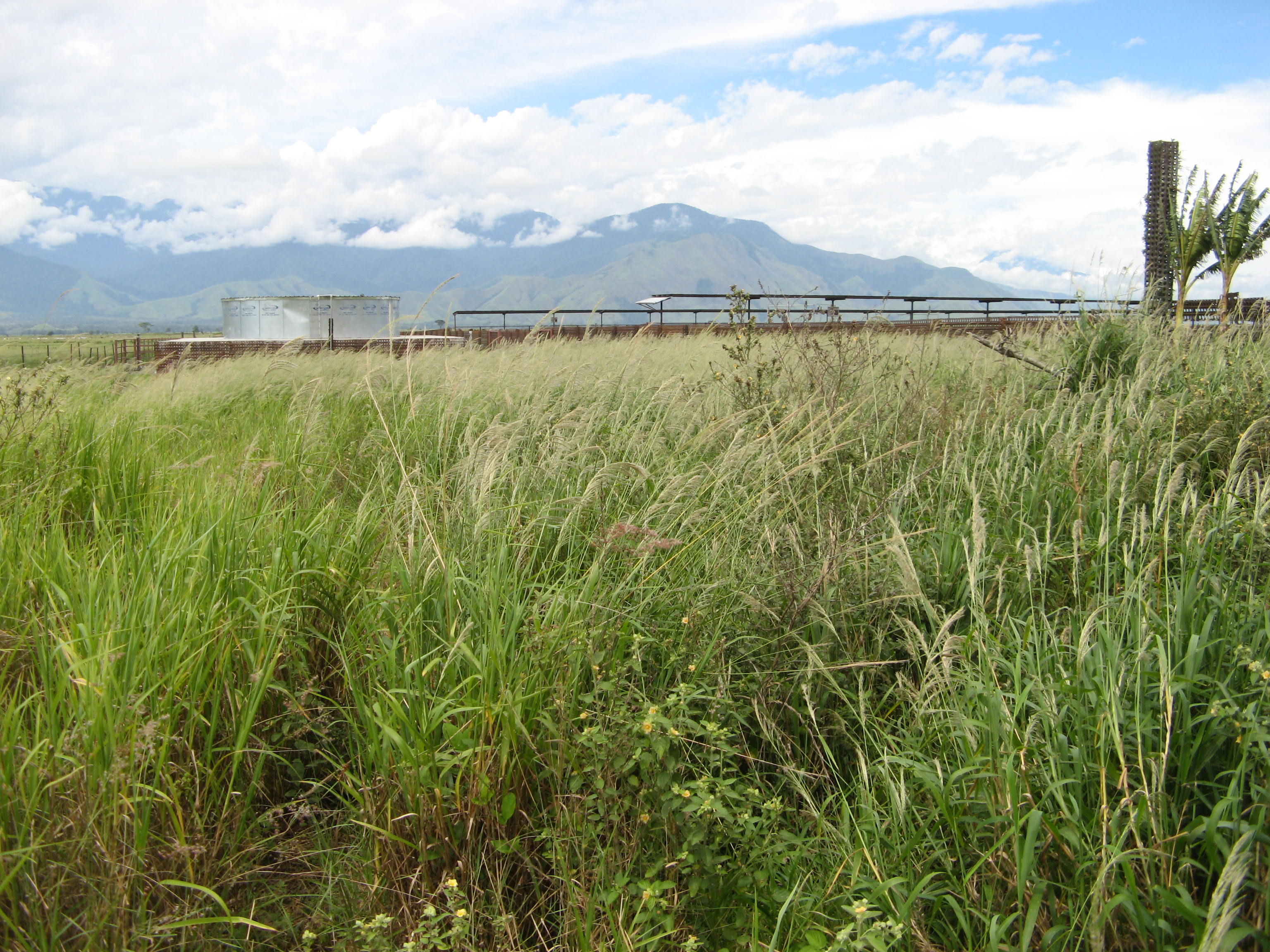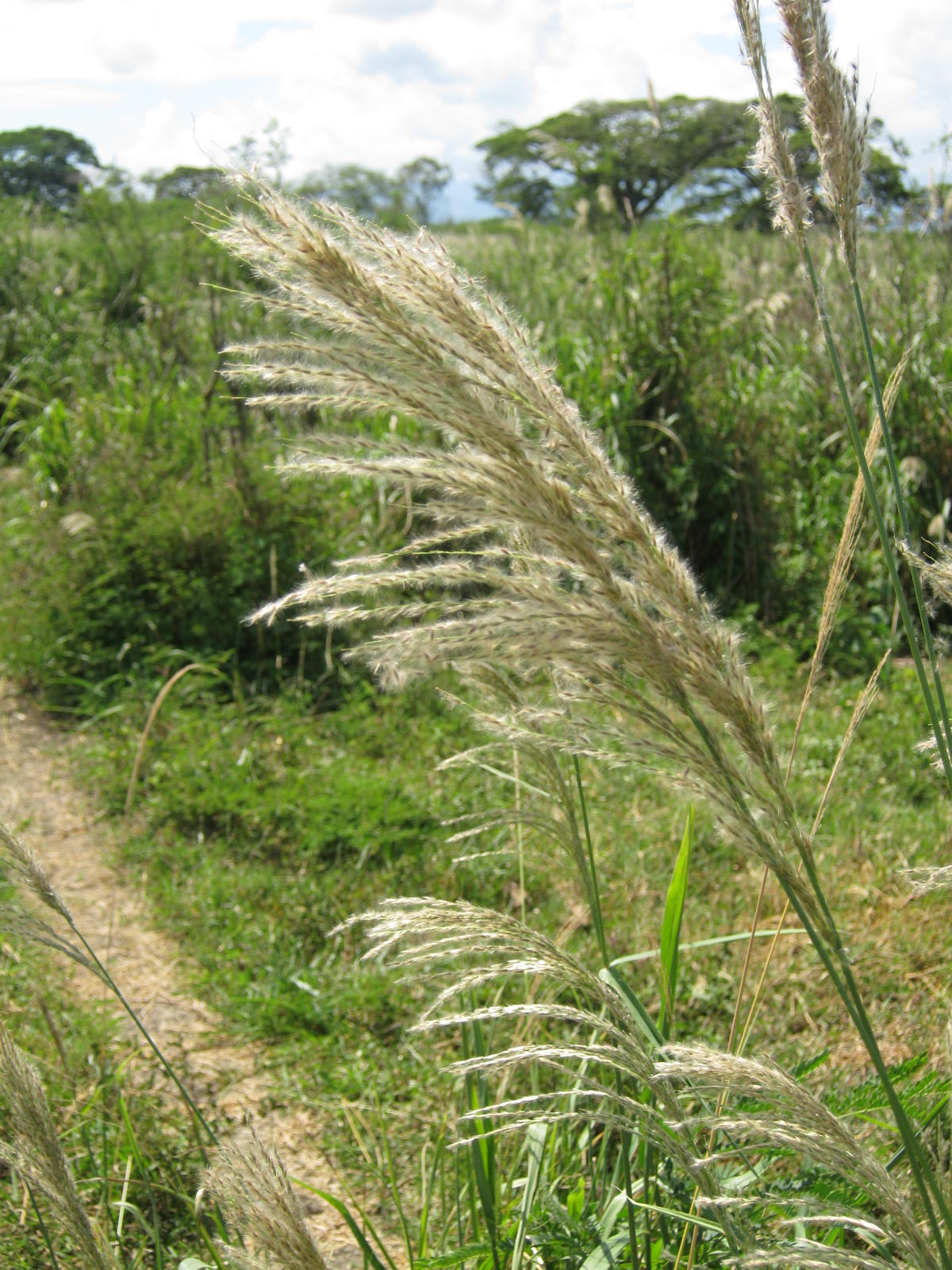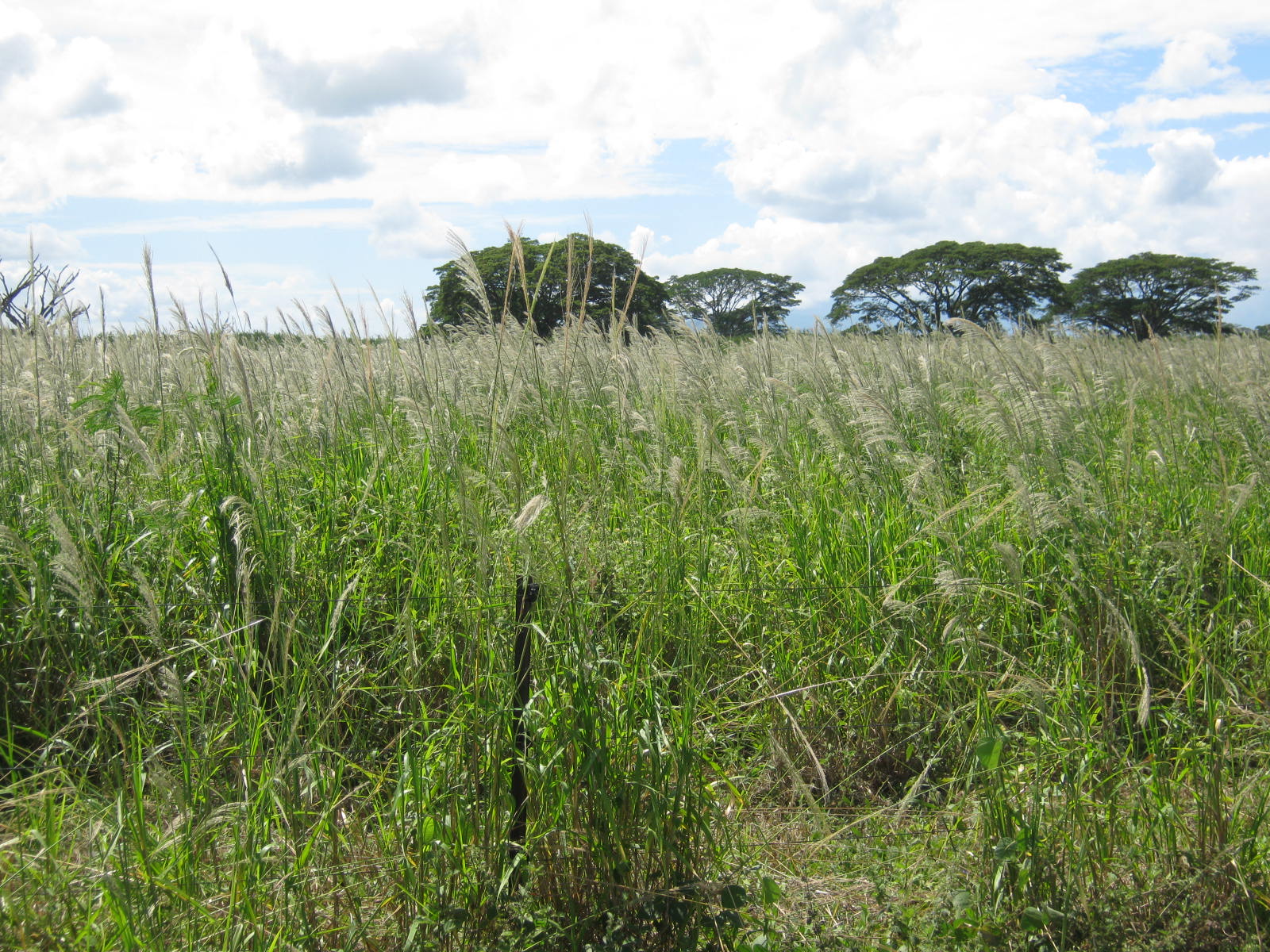Digitaria insularis also known as cotton grass or feather-top grass.
What to look for
Large, coarse, tufted grass with rough, hairy leaves. Flowers all-year round.
What you can do
- Do not move plants, plant material or soil out of the Torres Strait Protected Zone to the Torres Strait Permanent Biosecurity Monitoring Zone, or from either zone to mainland Australia without a permit and an inspection by a departmental biosecurity officer.
- Report any signs of suspect exotic grasses to the department by phone on +61 7 4241 7800 or email NAQS.

Profile
Sour grass is a fast-growing grass that has become invasive within its native and introduced ranges. It invades annual and perennial crops including soybeans, maize, cotton, sunflowers and pineapples. In pastures it displaces more desirable species and is unpalatable to livestock. Sour grass is known for its resistance to herbicides. Its fluffy seeds are spread by wind and as contaminants on farm equipment, vehicles and livestock.

Sour grass is a coarse perennial grass
Identification
Sour grass is a coarse, tufted perennial grass with short creeping rhizomes and erect stems up to 1.7 metres tall in flower. The leaves have hairy sheaths and slightly rough, flat blades 15-40 cm long x 1.5-2 cm wide. It flowers throughout the year. Flowering stems are white to brownish, dense, to 30 cm long with plumed spikelets. Seeds are golden-brown.

Sour grass produces large numbers of wind-borne seeds. Image courtesy of R. Hunt.
Distribution
Native in Central and South America, sour grass has become invasive in Hawaii, Philippines, Malaysia and Papua New Guinea. It is not yet known to be established in Australia. It thrives in a range of habitats and grows well in dry soils.
Threat
Sour grass seeds could enter Australia on camping and hiking gear as well as returning mining and military equipment. Once established it could spread widely via wind-borne seeds and vegetative fragments. Natural herbicide resistance would make control more difficult. In northern Australia it would cause crop losses and increased primary production costs as well as pasture and environmental degradation.

Sour grass is unpalatable to livestock and replaces beneficial pasture species. Image courtesy of R. Hunt.
Keep a Top Watch!
The annual cost of weeds in Australia is estimated to be more than $4 billion. New weeds add to the financial burden and must be prevented. Early detection offers the best opportunity of eradication or containment before they become a problem.

Extensive sour grass infestation in grazing land
Report any unusual grasses that you don’t recognise.
